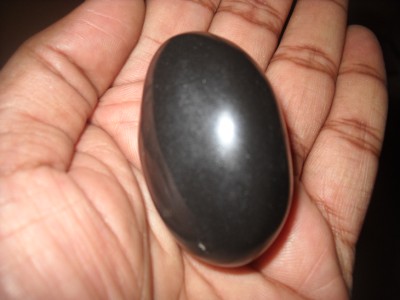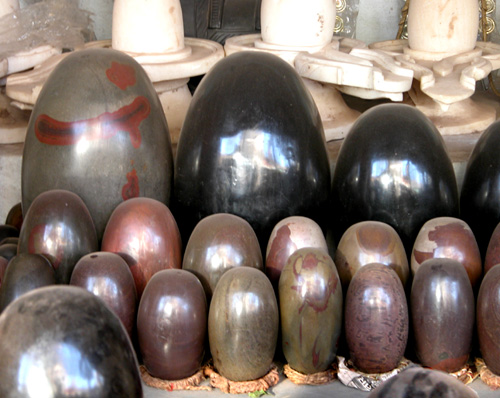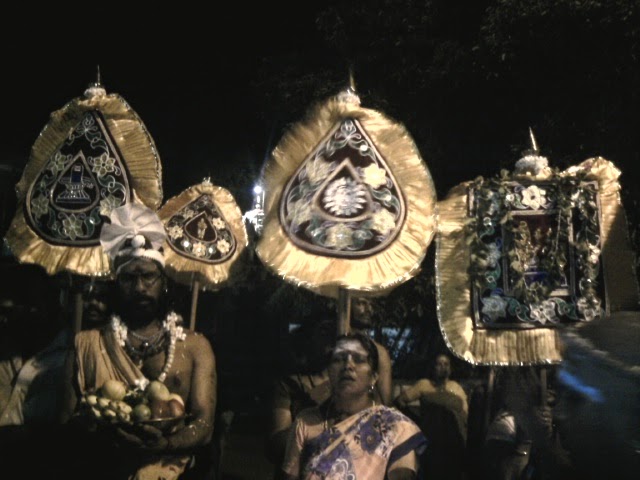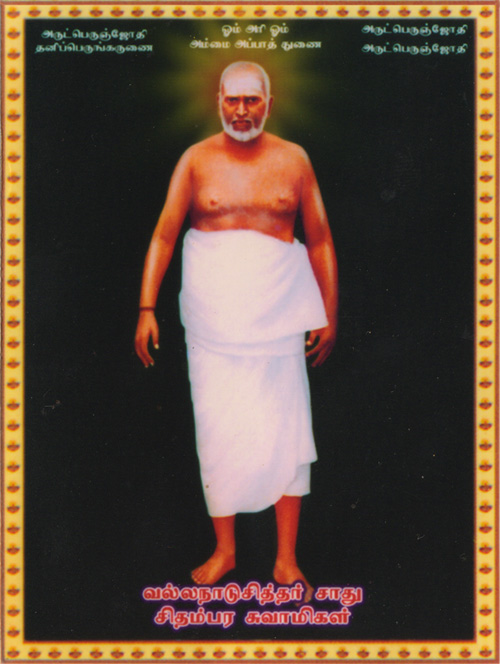If You Do One PRADHASHINAM "MAHA VILVAM" , You will get " Kailasam Poi Vandha Palan Kidaikkum Endru Sonnargal. Idhu Oru Idhazhilil 21 Idhazhvari (leaves) Varumam.Idhai Patri Therindhavargal Sollungalen.."
ஒரு முறை "மஹா வில்வம் " பிரதஷினம் வந்தால் ..கைலாய மலை பொய் வந்த பலன் கிடைக்கும் என்று சொன்னார்கள் . ஒரு இதழிலில் 21 இதழ்வரி (leaves) வருமாம் . இதை பற்றி தெரிந்தவர்கள் சொல்லுங்களேன் . " Thank : Tiger Balki ayya from FB
தேவலோகத்தைச் சேர்ந்த பஞ்ச தருக்களில் ஐந்து மரங்களில் மகாவில்வமும் ஒன்று (பாதிரி, மா வன்னி, மந்தாரை மற்றவை) லட்சுமிதேவியின் திருக்கரங்களிலிருந்து வில்வமரம் வந்ததாக வராக புராணம் சொல்கிறது.
சிவனுக்கு விருப்பமான வில்வமரத்தை வீட்டில் வளர்த்து வழிபட்டால் அவரது நண்பரான குபேரன் வீட்டுக்குள் வந்து விடுவார். வில்வ இலைகள் சிவனாகவும் முட்கள் சக்தியாகவும், காய்கள் குபேரனது நிதிகளாகவும் சொல்லப்படுகின்றன.
அகண்ட வில்வ மரத்தை வீட்டில் வளர்த்தால் அதிர்ஷ்டமும், பணம் காசுகளும் வீட்டில் குவியும். " Thank.. facebook.com/pages/Mantric-மாந்திரீகம்
தேவலோகத்தைச் சேர்ந்த பஞ்ச தருக்களில் ஐந்து மரங்களில் மகாவில்வமும் ஒன்று (பாதிரி, மா வன்னி, மந்தாரை மற்றவை) லட்சுமிதேவியின் திருக்கரங்களிலிருந்து வில்வமரம் வந்ததாக வராக புராணம் சொல்கிறது.
சிவனுக்கு விருப்பமான வில்வமரத்தை வீட்டில் வளர்த்து வழிபட்டால் அவரது நண்பரான குபேரன் வீட்டுக்குள் வந்து விடுவார். வில்வ இலைகள் சிவனாகவும் முட்கள் சக்தியாகவும், காய்கள் குபேரனது நிதிகளாகவும் சொல்லப்படுகின்றன.
அகண்ட வில்வ மரத்தை வீட்டில் வளர்த்தால் அதிர்ஷ்டமும், பணம் காசுகளும் வீட்டில் குவியும். " Thank.. facebook.com/pages/Mantric-மாந்திரீகம்
1.Vilvam (Bael)
2.Maha Vilvam
3.Kasi vilvam Sthala Vriksham in Viralimalai Murugan Temple and Natarajar Dhyana Sabai Neyveli
4.Ega Vilvam (Rare bael) one tree availiable in SRI SAILAM,Andhra Pradesh
2.Maha Vilvam
3.Kasi vilvam Sthala Vriksham in Viralimalai Murugan Temple and Natarajar Dhyana Sabai Neyveli
4.Ega Vilvam (Rare bael) one tree availiable in SRI SAILAM,Andhra Pradesh
We can found Maha Vilvam tree in one of the Chennai Navagraha temples in Kovoor near Porur Thirumaeneeswarar- Budhan ( mercury ) sthalam temple the Sthala Viruksham
is Maha Vilvam tree. It is very Rarity tree ...
The Maha Vilvam tree is unique because it has [ 5,7,9,13 ]
leaves in one stalk.
The priest told "It is a rarity and his grandfather found
this tree and one who finds a mahavilvam tree itself is destined for moksham!! .
This Maha Vilvam also has many medicinal properties in it ".
in other site i found about Medicine from Maha vilvam ( see in below pdf )..
Medicine made up of Maha vilvam(16 petals), Karu nochchi, should be taken with strict food discipline can cure diabetes within 24 days completely.
in other site i found about Medicine from Maha vilvam ( see in below pdf )..
Medicine made up of Maha vilvam(16 petals), Karu nochchi, should be taken with strict food discipline can cure diabetes within 24 days completely.
A Mini Review about 'MAHAVILVA’ by V.N.Ariharan* and P.Nagendra Prasad
pdf : 1
ABSTRACT
Maha Vilvam is a holly tree commonly found in the Sacred
Groves from Kanyakumari to Kashmir in the foot hills and in plains which has
many medicinal secrets. Vilva trees are the Sthalavirusham of the most of the
Shiva temples in India. The Botanical Name of the Vilvam is Aegle marmelos(L.)
Corr., which belongs to the Orange family Rutaceae. All the parts of the plant
are used as an important medicine. Even though all the parts of the plants are useful,
the leaves and fruits are mostly used as important drug in the ancient system
of medicine to cure almost all the common ailments of the Human being. In this
present study the qualitative phytochemical analysis of Aegle marmelos leaf
extract was carried out and the results were discussed.
Keywords: Aegle marmelos, Phytochemistry, Tuberclosis,
Phenols, Flavanoids ..
The mentions of Vilva plant have been found in ancient Indian scriptures such as Vedas and Purana like Yajurveda and Mahabharata. Hindus hold the Vilva tree in great venerations. It is one of the most sacred trees of India. The leaves are ternate and hence one of the vernacular names is Tripatra. It is generally cultivated near temples and is offered to Lord Shiva, whose worship cannot be completed without the leaves of this tree. Lord Shiva is believed to live under the Vilva tree. It is also called Shivadurme, the tree of Shiva. According to Hindu mythology, the tree is another form of Lord Kailashnath. It is also sacred to Parvati and is the Vilva rupra, one of the Patricas, or nine forms of Goddess Kali. The planting of this tree by the waysides gives long life. Its leaves are also used as enchantments. It is incumbent upon all Hindus to cultivate and cherish this tree.
MahaVilva is a divine tree which thrives well in all agro climatic conditions form Kanyakumari to Kashmir and all parts of the useful. It pleases the Lord as well as cures all common ailments of Human being by all means. It is our humble duty to protect the species and save the environment and save the mankind from destruction. In the light of the above seen evidences Vilva is a sacred tree with immense religious and medicinal secrets on it.
Medicinal Value of Vilvam/Bilva/Bael
Vilva leaf juice is put in the eyes and paste of leaves is applied over the eyelids.
Vilva leaves are used for fomentation in disease condition like swelling pain in ribs.
Vilva leaves alleviates oedema and pain.
Vilva is a cardiac tonic, haemostaic and alleviates swelling, hence is root used in cardiac dedillity and palpitation.
Vilva root bark and leaf juice are used to alleviate oedema.
Vilva root alleviates the inflammation of uterus, hence it is used in pregnancy, leucorrhoea and puerperal disorder.
Vilva root tranquilises the nerves hence it is used in vata disorder, insomnia. Epilepsy and hysteria.
Vilva unripe fruit is an appetizer, digestant and astringet. Ripe fruit is a sweet, mild laxative.
Vilva leaves juice is leaver stimulant.
Vilva root bark, unripe fruit are useful in loss of appetite, diarrheoa, dysentery, sprue, pain in abdomen.
Vilva unripe fruit ground to paste and cooked with sugar is very beneficial in bleeding piles.
Vilva sharbat of ripe fruit pulp can be used as it act as digestive and alleviates diarrhoea.
Vilva leaf juice mixed with black pepper used in jaundice.
Vilva fruit (ripe or unripe) useful for prevention of cholera.
Vilva is haemostatic it is also used in hemorrhoids.
Vilva roots are useful in vata disorders, fruits in disorders of inter channel. Vilva, Durva and Tulsi are used in vata, pitta and kapha disorders
 சிவபூஜையில் பிரதான இடம் வகிப்பது வில்வம் ...
சிவபூஜையில் பிரதான இடம் வகிப்பது வில்வம் ...சிவபூஜையில் பிரதான இடம் வகிப்பது வில்வம், ஒரு ஒற்றை வில்வ இலை, சிவபூஜையில் ஓராயிரம் மலர்களுக்கு சமமாகிறது. இந்த வில்வம் ஒரு கல்ப மூலிகையும் கூட உஷ்ணம் தப்பதில் ...வில்வம் முன்னிலை வகிக்கறது. இதற்கு நேரானது “ துளசி “ இது உஷ்ணாகாரம் இதன் குணம். உடலின் வெப்பத்தைத் தணிப்பதில் வில்வம் நிகரற்றது. ஒரு ஆச்சரியம்... சிவமாகிய பரமன் அழித்தல் தொழில் புரிபவன். அழிப்பது என்பது ஒரு வினை. எதை அழித்தாலும் அது ஒன்றாகி இரண்டாகிப் பிரிஉம் இறுதியில் சாம்பலே மிஞ்சும். இந்த விளைவால் வெப்பம் உருவாகும். அணு விஞ்ஞானம் இதன் அடி ஒற்றியே உள்ளது. சிவத்தைத் தியானிக்கும் மனதிலும் காம, குரோத, லோப, மத, மாச்சரியங்கள் அழியும். அதனால் உருவாகும் வெப்பம் தணியவே வில்வம் முன் நின்றது. வில்வார்ச்சனை என்பது வெப்பம் தணிப்பது. அகத்திலும், புறத்திலும் வெப்பம் தணிய வைப்பது. உடலில் உயிரும் வெப்பச் சுரளாகவே உள்ளது. வெப்பத்திடம் இயக்க கதியே பிரதானம். அது குளிர்ந்தால் இயக்கமற்ற சமநிலை வாய்க்கிறது; சிவமும் வில்வமும் இப்படிப் பல சூட்சுமங்களைக் கொண்டு விளங்குவதை என்னென்பது
Thanks & Regards
Harimanikandan .V
ஹரிமணிகண்டன்

Be Good & Do Good


















































